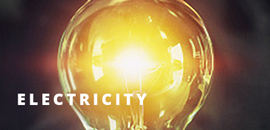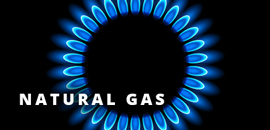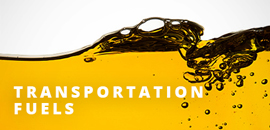PROGRESS REPORT
The Texas Department of Criminal Justice (TDCJ) as part of the plan puts together a list of energy conservation-related projects currently in progress and future planned projects. Additionally, an employee awareness pamphlet has been developed to create a positive mindset for all agency employees regarding the importance of energy consumption reduction awareness and how everyone's actions can make a difference. Regional Directors receive monthly consumption and cost reports for each unit within their region. The Agency's consumption and comparison updates for fiscal year (FY 22) are provided on pages 8 through 12. The utility savings and results for FY22 are provided on page 13. TDCJ performed Preliminary Energy Audits (PEA's) in FY22 and are reported on page 13. Additionally, a list of energy and water conservation projects that have been completed or are currently active for FY22 are illustrated in the Type of Project table on page 14. Proposed energy and water conservation projects for FY23 are listed on page 15. y audits to identify new utility savings opportunities.
GOALS
- Every fiscal year Texas Department of Criminal Justice (TDCJ) closely scrutinizes all its facility repair and renovation projects to ensure they meet the State of Texas’s mandated energy design certification requirements.
- TDCJ will continue to retrofit existing equipment/systems with newer more efficient equipment/systems as the need for replacement arises. In conjunction with meeting or exceeding energy efficiency of equipment and material being replaced and with the shortest simple payback in mind, the ANSI/ASHRAE/IES Standard 90.1 and IECC publications are used as the guideline in establishing what level efficiencies are used at the States’ correctional units. When possible, the most energy efficient and water saving products are incorporated into each design with project cost and project payback being the largest determining factor. During the initial evaluation phase TDCJ analyzes the project for any potential energy/water savings. This information is then relayed to other team members and a re-evaluation of the selected equipment is determined based on the potential higher efficiency/water saving. Other options applied during the design phase of larger projects include reviewing the use of new technologies. The goal is to review the efficiency level shown in the guideline publications and install equipment with energy efficiency levels 10 percent higher.
- TDCJ has continued with implementation of Executive Order RP-49. Utility and energy consumption reduction remains a high priority of the agency every year. The TDCJ is committed to the set goal of a 2.5 percent reduction for electricity, natural gas, water, and gasoline every fiscal year. TDCJ prepares a quarterly consumption and comparison report that identifies a targeted goal required to meet the established 2.5 percent consumption reduction goal. All TDCJ regions and units are provided quarterly information to track their electricity, natural gas and water consumption, for the purpose of comparing to their individual targets, and the overall agency goal. Data is also collected and compiled from the TDCJ Fleet Management System for gasoline. To assist in achieving the reduction in gasoline consumption is the TDCJ Administrative Directive 02.50 Vehicle Policy requiring strict enforcement of the proper uses of state vehicles, bulk fueling stations, and car-pooling.
- Like most of the State of Texas agency goals, the TDCJ’s goal is to reduce utility and energy consumption by incorporating and installing sustainable utility and energy systems, and by utilizing efficient and sustainable energy designs within its facilities and
- The TDCJ has started updating the Preliminary Energy Audits (PEA’s) at its facilities. TDCJ has 103 inmate occupied units it will be evaluating using the PEA technique. The information provided from the PEA’s will allow the TDCJ to incorporate energy considerations into each design with strategic processes and priorities. The TDCJ can then analyze and evaluate what impact using the most energy efficient products will have to provide the best energy cost savings for the State of Texas. To accomplish the task, trained inhouse personnel will conduct onsite visits throughout the year.
- The TDCJ intends to permanently reduce water consumption system wide by an overall amount of 10 percent. A 10-year timetable was adopted to accomplish the 10 percent water consumption and cost reduction. The water reduction program began in fiscal 2017 through fiscal 2018. TDCJ has already taken advantage of the State of Texas LoanSTAR loan program for several projects. At those units, the TDCJ has reduced water consumption by 35 percent. The objective is to request up to 3 LoanSTAR loans every year.
- When it comes to lighting, LED’s have the shortest simple payback than any other type of energy efficient material or equipment. TDCJ has hundreds of thousands of 4’-T8 Florescent lights in our system. As the old T8 florescent lights burn out they are now replaced with a LED light. Starting in November 2018, a program was initiated to replace all 4’-T8 with LEDs. This product has a longer operational life than conventional lighting (typically over a 100,000 hours), superior energy efficient, brighter, versatile use, ease of installation, less annual maintenance, large number of applications, and are not affected by switching on and off. TDCJ will continue to order and distribute LEDs to its facilities throughout the system.
- TDCJ’s procurement manager has always chosen energy contracts at the lowest fixed cost possible.
- In addition to the 2.5 percent goal shown below, TDCJ shall reduce the electrical consumption at its TDCJ operated units in the non-attainment counties by an additional 2.5% for a total of 5% as directed per TEXAS HEALTH AND SAFETY CODE 388.005 (c) each fiscal year starting on Sep. 1, 2019 and concluding on Aug. 31, 2026. The actual kWh data used in establishing the 150,069,622-kWh benchmark year (Sept. 1, 2019 – Aug. 31, 2020) number was taken from the TDCJ’s annual reported data that had the highest annual kWh number over the last 5 years (2015-2019).
| Utility | Target Year | Benchmark Year | Percentage Goal |
|---|---|---|---|
| Water | FY2031 | FY2020 | 0.025 |
| Electricity | FY2031 | FY2020 | 0.025 |
| Transportation Fuels | FY2031 | FY2020 | 0.025 |
| Natural Gas | FY2031 | FY2020 | 0.025 |
STRATEGY FOR ACHIEVING GOALS
See Goals
IMPLEMENTATION SCHEDULE
- TDCJ will continue to retrofit existing equipment/systems with newer more efficient equipment/systems as the need for replacement arises. TDCJ will also continue to analyze potential energy saving projects and applications of new technologies with project cost and project payback, initializing energy saving projects where feasible. A list of energy conservation projects planned for the fiscal 2023) are provided on page 17.
- The Preliminary Energy Audits when finished will include 103 currently occupied units throughout the state. A PEA was first done at all the units in 2005 and finished in 2009. The re-evaluation process started in 2019-2020 and is time consuming with units spread out throughout the state. The energy audits will be conducted onsite to ensure accuracy of the data collected. The data is now transforming from paper folders to a word and spreadsheet format. The TDCJ’s facilities engineering staff is committed to finish the PEAs at all its facilities by the end of 2025.
- Annually, TDCJ strives to reduce utility and energy consumption by incorporating and installing sustainable utility and energy systems, and by utilizing efficient and sustainable energy designs within its facilities and
- TDCJ is committed to funding cost effective projects that will provide cost avoidance on a recurring basis. Therefore, projects will be prioritized accordingly. However, the implementation of all prioritized projects is contingent upon the amount of appropriated funding TDCJ
- TDCJ is retrofitting existing equipment/systems with newer more efficient equipment/systems when the need for replacement This includes the retrofitting of equipment/systems such as but not limited to; Water Heaters and Water Control Systems, Lighting (LED Lamps), Windows, Roofs, Pumps, Motors, Air Ventilation and HVAC Systems.
- The energy procurement process takes place every other year for a two-year contract. This insures a steady and predictable price structure where wide fluxions in the market occur.
- Listed below are examples that TDCJ consistently targets each year to assist in achieving a reduction in utilities and energy
- LIGHTING – LED use for Indoor and Outdoor lighting for illuminating areas such as cells, administration, education facilities, gymnasiums, parking and high security areas are a significant part of all new lighting replacemen
- WATER CONSERVATION AND REDUCTION – TDCJ consumes a large amount of water through various water delivery system devices, such as, lavatories, sinks and showers. Wear and tear can cause these products to leak. Water is now becoming a scarce resource throughout the State of Texas. TDCJ is committed to sustainably managing this natural resource by means of constant maintenance to stop water leaks and engaging in a relatively new conservation method to control and reduce water consumption. The water controlling devices that are now being incorporated into plumbing systems at many of TDCJ’s facilities are in the sink, toilet, and shower areas.
- WATER HEATERS - In addition to replacing equipment with analogous equipment that basically meets standards, consideration is given for substitute technologies which are cost effective and more energy efficient. In certain situations when boilers or heat exchangers fail, 100-gallon capacity water heaters are used to replace those type of hot water heating equipment.
- VARIABLE FREQUENCY DRIVES (VFDs) - are now being used in many more applications as an energy saving device throughout the Heating, Ventilation and Air Conditioning industry. They are used to modulate motor speed by allowing the motor to speed up at higher cooling or heating demands and slow down when the demand is low. Reduced motor speed provides a significant reduction in motor power. The energy savings when used in fans, pumps and compressors can be 30-50 percent over conventional speed applications.
- AIR VENTILATION AND HVAC SYSTEMS - Air ventilation is a key factor in providing make up air for both indoor air quality and comfort. The combined use of roof top exhaust fans with wall exhausters produces a continuous comforting breeze and controls air pressure discrepancies. Often a lot of idle time happens between cooking. Modulated exhaust systems have been developed to reduce up to 70% of electrical energy that are used to run the fans and still operate within the guidelines required to exhaust the air. TDCJ uses several types of HVAC systems to cool and heat its facilities. The two types of everyday systems used are either simple or complex. Simple systems use natural gas in a furnace, direct refrigerant, and typically serve a single zone. Complex systems use refrigerant to chill water or use a boiler to heat the water which then feeds to air handler coils. These complex systems can heat or cool multiple areas at one time. The TDCJ is committed to raising the bar when it comes to HVAC equipment efficiency levels. Additionally, using variable speed drives on fans, variable air volume on chillers helps increase efficiency levels.
- PROCEDURAL CHANGES – TDCJ strives to implement procedural changes that emphasize conservation with low-cost repairs and more efficient
AGENCY FINANCE STRATEGY
Funding options will be subject to the appropriation for capital items and may include but not limited to the use of general revenue funds through the LoanSTAR program and grant The specific financial strategy for each project will be based on the scope of individual projects and the available funding resources.
EMPLOYEE AWARENESS PLAN
Please see attached TDCJ Employee Awareness Pamphlet which is issued during employee training sessions. The pamphlet contains information for utility costs and how changes in behavior can reduce utility costs.






